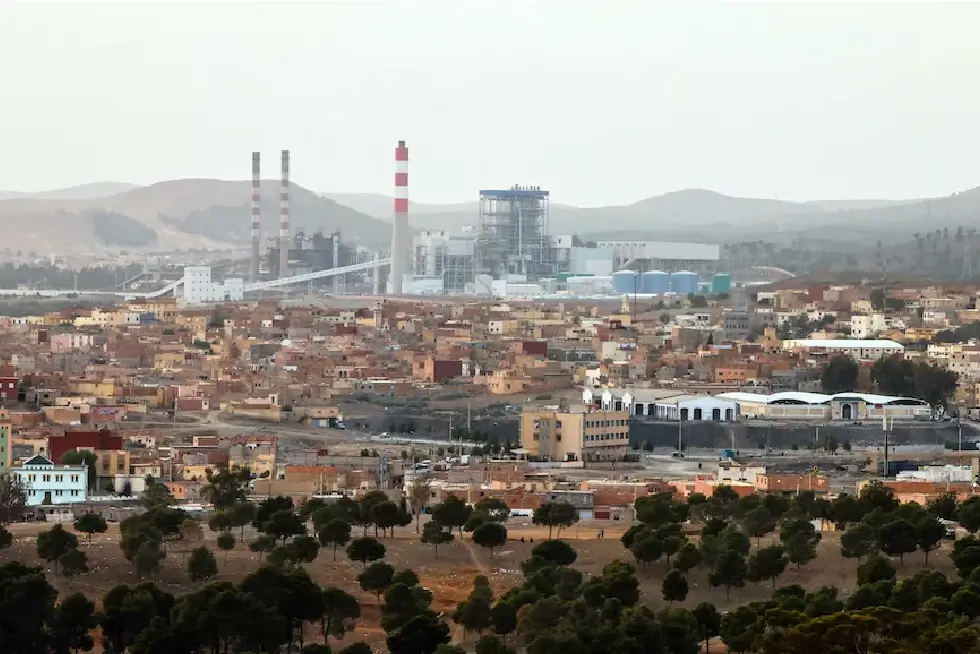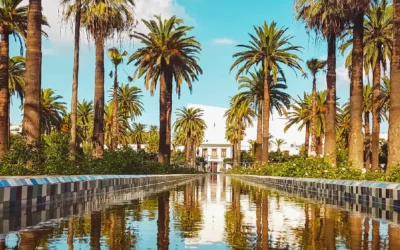Jerada: The City of Morocco that’s Known For Mining

Table of Contents:
Introduction to Jerada City
Jerada city is located in the Oriental region of northeastern Morocco, close to the Algerian border. It is the capital city of Jerada Province.
Renowned for its coal mining history since 1927, Jerada was once a thriving hub for mineral extraction. The city’s coal mining industry provided livelihoods for locals and played a pivotal role in the birth of Morocco’s labor union movement.
However, in 1998, a government decision to halt coal extraction marked a dramatic shift. By 2001, mining was officially banned, plunging Jerada into economic hardship.
This abrupt change transformed Jerada from a bustling economic center to a city grappling with unemployment and the hazards of clandestine mining. This shift in Jerada’s fortunes illustrates the profound impact of industrial and economic changes on a community’s fabric.
Jerada Discovery Tour
Jerada is a small city that can be easily explored within a day or a few, with not many attractions or a wide range of accommodation options.
Here are some popular places to visit in Jerada:
1. Parc Lalla Aicha
A park offering a serene environment for relaxation and leisure activities.
2. Le Souk de Oujda
A vibrant flea and street market known for its variety of goods and bustling atmosphere.
3. Complexe Le Tropical
A water park that provides a fun and refreshing escape, especially in the warmer months.
4. Eglise Sainte Agnes
A church that showcases architectural beauty and offers a sense of tranquility.
5. Beni Snassen Mountains
A. Gorges du Zegzel
Dive into the heart of these stunning limestone gorges. Surrounded by lush fruit plantations and vibrant orange groves, they offer a picturesque landscape that’s perfect for exploration.
B. Ras Fourhal Peak
At 1,532 meters, this peak is the crowning glory of the mountains. It’s not just a vantage point for breathtaking views, but also a gateway to the area’s rich agricultural life, with almond trees and orchards dotting the slopes.
C. Outdoor Adventures
This area is a paradise for thrill-seekers. Engage in hiking, rock climbing, or even hunting amidst a diverse range of flora and fauna. The mild climate, coupled with the enchanting forests, streams, and the famed Zegzel Gorges, makes it an ideal spot for various excursions.
Jerada Accessibility And Transportation
These transportation options make Jerada accessible and navigable for both residents and visitors, offering a mix of public and private modes to suit different needs and preferences.
Jerada offers several transportation options for both arriving and getting around in the city:
A. Getting to Jerada
1. Train and Taxi
To reach Jerada, the most straightforward method is by first taking a train to Oujda, the prominent city in Eastern Morocco. From there, a one-hour grand taxi journey from Oujda’s main bus station will take you directly to Jerada.
2. Buses and Grand Taxis
For a journey from Oujda to Jerada, buses are available multiple times daily, starting at sunrise. Alternatively, you can opt for a grand taxi from Oujda, which will get you to Jerada in about 45 minutes to an hour.
B. Local Transportation in Jerada
1. Hondas and Petit Taxis
In Jerada, for short trips, you have two convenient options. Hondas are perfect for carrying heavy items, costing only 10-20 dirhams. For traveling to nearby areas, like Hassi Billal, petit taxis are ideal, charging just 3 dirhams by day and 5 dirhams at night.
2. City Bus
Jerada’s city bus service offers a convenient and affordable way to explore different areas of the city, including a route to Hassi Billal. The cost? A mere 2 dirhams.
C. Walking and Main Streets
Walking
In Jerada, walking stands out as a favored way to get around. The city’s layout, with its three main streets, makes on-foot navigation a breeze.
Modern Jerada and its Economic Significance
Jerada: From Coal to Community Resilience
A. The Fall of Coal Mining
Once a bustling coal mining hub, Jerada faced a harsh reality when its mines closed in 1998. This closure, marking an end to the city’s primary economic activity, led to a dramatic decline in employment and population, changing the city’s dynamics almost overnight.
B. Efforts to Revitalize
Despite attempts to modernize and diversify the economy, the city struggled to provide new job opportunities. This led to a demographic shift, with many residents leaving in search of better prospects.
C. A New Chapter
Recent initiatives have aimed to revitalize Jerada, focusing on improving infrastructure, supporting agriculture, and enhancing healthcare services.
These efforts symbolize a renewed hope for the city’s future, aiming to transform it into a more sustainable and vibrant community.
D. Looking Ahead
Today, Jerada stands at a crossroads, aspiring to balance its rich history with new opportunities. The city’s resilience and adaptability shine through as it navigates its post-coal era, striving for a brighter and more sustainable future.
Jerada History Overview
A. Discovery and Growth
In 1927, Jerada’s destiny changed with the discovery of coal, marking the beginning of its journey as a mining hub. Coal extraction, starting in the 1930s, transformed Jerada into a bustling economic center, influencing the lives of its inhabitants profoundly.
B. The Birth of Labor Movements
The harsh conditions faced by miners under the French protectorate ignited a spirit of unionism.
The first major labor union congress in Morocco was hosted in Jerada in 1946, spearheading the labor movement in the country and leading to the creation of the Moroccan Workers’ Union in 1955.
C. Tragedy and Decline
However, Jerada’s prosperity was short-lived. In 1998, the government decided to cease coal extraction due to high costs, leading to the official ban in 2001. This decision devastated the local economy, turning Jerada from a thriving city into a neglected town, with many turning to clandestine mining for livelihood.
Conclusion
Jerada, Once a bustling mining center, it has transformed over the years, adapting to the changing economic landscape. Despite facing challenges such as the decline of the mining industry, Jerada has shown resilience and a strong community spirit.
The city’s ability to evolve while preserving its cultural identity is commendable, making it a symbol of endurance and adaptation in the face of adversity.
FAQ
What happened to Jerada’s coal mining industry?
The coal mining industry in Jerada faced a dramatic decline when the government decided to halt coal extraction in 1998, officially banning mining by 2001. This decision transformed Jerada from a thriving economic center to a city struggling with unemployment and clandestine mining activities.
Are there tourist attractions in Jerada?
Yes, Jerada offers several attractions including Parc Lalla Aicha, Le Souk de Oujda, Complexe Le Tropical, Eglise Sainte Agnes, and the scenic Beni Snassen Mountains with its Gorges du Zegzel and Ras Fourhal Peak, offering diverse activities like hiking and rock climbing.
What is Jerada City known for historically?
Jerada City, located in the Oriental region of northeastern Morocco, is historically known for its coal mining industry. Established in 1927, it played a crucial role in Morocco’s labor union movement, thriving as a mining hub until the closure of its mines in 1998.
How can one access Jerada and navigate within the city?
Jerada is accessible by train and taxi from Oujda, with buses and grand taxis also available. Within the city, local transportation includes Hondas, petit taxis, and city buses. Walking is also a popular means of navigation due to the city’s layout.
What are the current economic conditions in Jerada?
Post the decline of coal mining, Jerada has been facing economic challenges. Efforts to revitalize the city focus on improving infrastructure, agriculture, and healthcare, aiming to transform Jerada into a sustainable and vibrant community.
What is the significance of Jerada in Morocco’s labor history?
Jerada is significant in Morocco’s labor history as it was the site of the first major labor union congress in 1946, which played a pivotal role in the creation of the Moroccan Workers’ Union in 1955. This history highlights its influence in the country’s labor movement.
What efforts are being made to revitalize Jerada?
Recent initiatives in Jerada aim at revitalizing the city by improving infrastructure, supporting the agricultural sector, and enhancing healthcare services. These efforts represent a commitment to transforming Jerada into a more sustainable community.



